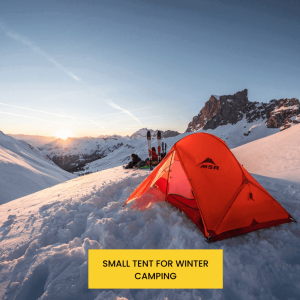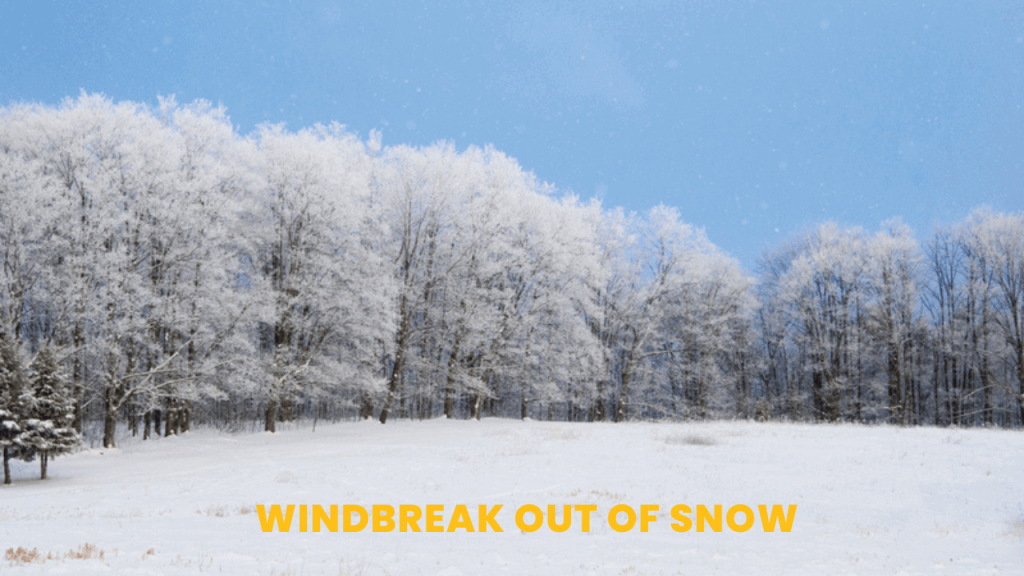Staying warm during winter camping is the biggest challenge. Winter weather can be vicious depending on where you are camping.
Therefore choosing the right equipment for this purpose is very important and you know, a tent is an integral part of these types of equipment. You don’t always need luxury tents to stay warm; insulating a tent is a great option.
Importance of Insulating a Tent for Winter Camping
First, you should know the importance of insulating a tent, and then I will discuss how to insulate a tent for winter Camping.
- It’s necessary to insulate your tent for winter camping to rest easily at night and prevent you from hypothermia. It is a condition that occurs when your body loses excessive heat. If your body temperature drops to 98.6 degrees Fahrenheit or below, you become vulnerable to hypothermia.
- it also stop from frostbite.
- Insulated tents can keep you warm and prevent moisture.
- Insulation prevents heat loss from the transmission, ensuring you stay warm and comfortable inside.
Inside your tent, cold air moves and becomes warmer when interacting with your body. These steps lead to steam and moisture, which the presence of water can worsen. For example, if the outer side of your tent is showering.
As moisture grows, fungus and mould can grow, which can be unsafe if you are sensitive or have shortness of breath. It also has the unsolicited result of making the air inside icier. In this article I’m going to give detailed information on how to insulate a tent for winter camping.
How do Insulated Tent Work?
The main purpose of insulation is to hold the heat inside or outside the tent. It can control the free movement of heat in and outside the tent.
How is heat transferred? Heat is transferred in three ways: conduction, convection, and radiation.
Conduction: It is the flow of heat through solids.
Convection: It is the transfer of heat through a medium such as air or water.
Radiation: These are infrared rays. In short, heat is transferred through rays.
Two basics to insulate a tent for winter:
Following are the two basic things you should consider to insulate a tent for winter camping:
- Keep heat inside: When we have a heat source (human bodies, space heaters) inside a tent, like our own bodies or a space heater, we want to keep that heat inside to stay warm.
- Keep cold outside: When it’s cold outside, we want to keep the cold air from getting into our warm tent space. If cold air comes in, it makes the tent colder, and we need to use more energy to heat up that cold air to our desired temperature.
We can insulate the tent for winter camping by using these two rules. In the following, I will explore more methods to insulate the tent for winter camping.
How to Insulate Tent for Winter Camping? 10 Best Methods
Can you insualte a camping tent? Yes you can insulate a caping tent. In the following are the ways to insulate your tent for winter camping.
1. Choose a 4-season tent
Firstly you have to choose a tent according to the weather conditions. There is no use in insulating a tent if it’s not going to be well in cold weather.
For winter camping, you will need a four-season tent instead of a three-season tent. Both tents are diverse because of their inner lining.
Four-season tent has a thicker inner lining that keeps us warm. It has more dowel and vessel ropes for balancing, while three-season tents are breathable and lightweight with a cover made mainly of the net. Four-season tents are for immense weather conditions like snow, rainfall etc.
2. Opt for a smaller tent

Selecting a smaller tent with proper insulation is a suitable plan. Usually, huge tents are less effective at keeping you warm as the air turns cooler more effectively in a vast space. Moreover, it will be costly if you purchase a giant tent and also difficult to carry along them.
3. Use a tarp to block the wind
Winter month usually brings heavy winds. As a result, it can cause devastating damage sometimes. A tarp is an extra layer of protection on the top of your tent. It will help in blocking the colder air that is invading your tent.
Furthermore, adjust your flysheet in the direction from where the wind passes through to help stop cold air. Thus, you can take your beauty sleep even if wind waves blow through your tents at night.
I suggest you carry a compact tarp during winter camping. According to my recommendation, the Gold Armour Rainfly Tarp is the best choice. It has double benefits, as you can also use it as a hammock in emergencies
4. Built a windbreak out of snow
However, it sounds unreasonable; you can keep your tent warm by using snow. If you are camping in snowy weather, it would be an excellent substitute for using snow and building a massive wall of snow over your tent.
Snow walls are often intense and more effective than tents. You can use them to stop the cold wind from hitting your tent directly. The snow size will depend on the amount of snow you have in your camping area. Usually, you can build a snow wall around 2 to 3 feet on the ground.
You can build a snow wall with the help of a spade. Use a spade to build a wall about 3 to 4 feet high that covers your tent’s surroundings. If the amount of snow is less to complete surroundings, target the side which faces the prevalent wind.

5. Cover the tent with a thermal blanket
You can buy tents with a thermal layer of insulation in them. If it’s a four-season tent and the thermal layer is not insulated, you can buy a thermal blanket separately to cover your tent. It stops cold air from coming inside your tent and keeps it warm. A thermal blanket is specially used for winter camping when your four-season tent’s natural insulating capacity is insufficient to keep you cosy.
Although utilizing a thermal blanket to cover the top of your tent can trap warmth inside, it can help to stop your body heat from getting away into the cold winter night.
6. Line the tent’s roof and walls with insulating fabric
A great idea to stay warm in winter camping is insulating the ceiling and walls of your tent. You can use extra insulating fabric or material on the roofs and walls to keep the inside warm. You can find insulating material easily from hardware shops.
Perhaps the most uncomplicated technique is to use the parts of a thermal blanket or Mylar blanket and use that to line the inner of your tent. The only issue with insulating the walls and roof is that it’s difficult and takes a lot of time. You can try adhesive tape for insulation of walls and ceilings. While insulating your walls and roof, don’t forget to close up all your window net and doors completely.
7. Pack a tent footprint
Insulating your tent from the top is not enough. You have to pay special attention to Insulating your tent from icy cold and moist ground. Keep in mind Insulating your entrance hall along with the base is essential because it makes your tent look dry and clean.
Tent footprints are the significant waterproof fabric that provides an extra layer of protection between you and the frozen winter ground. It protects the base of your shelter from damage. It helps in increasing your tent’s life for years.
There are a lot of tent makers who sell and produce their footprints. Tentmakers provide customized services to their customers. Tentmakers make their purpose-built footprints. Anyhow, if you cannot find a groundsheet that meets your requirement, you can use a standard camping tarpaulin sheet.
8. Use foam padding to insulate the floor
Even though you are already protecting your tent with other equipment, covering your tent floor with foam padding is comparatively reasonable. It can limit heat transfer between your tent and the cold ground.
Foam padding keeps the floor of your tent comfortable, and that will protect your feet from frigid while walking inside the tent. However, you will already be sleeping on a sleeping pad or a cot. Foam padding is essential, especially for beginners who are easily affected by the freezing effects of cold or snowy ground.
9. Bring rugs or section of carpet
It would help if you covered the floor inside your tent with rugs or a section of carpets to make it cosy and warm for winter camping. The people who don’t have extra rugs and carpets can use blankets. However, blankets are not as durable as rugs and carpets. So be careful while moving into your tent.
Although Foam padding has a more natural insulating capacity than carpets, rugs and carpets provide extra comfort during the winter. They help make your tent warm on a frosty night in the forest.
10. Try a tent heater
If camping where the temperature drops below freezing, you might need to grab a tent heater. There are many options to consider while choosing a tent heater; there are two models of heater one is electric-powered, and the second is gas-powered. They are available in all shapes and sizes.
You can buy them depending on the space you have in your tent. You can easily buy them from camping stores and general stores. They are mostly inexpensive and keep you warm throughout the night.
Remember that tent heaters can be alarming if not used correctly. These can be scorching in contact. Gas-powered models have an open face which is risky because it can set a fire and exhaust fumes. Therefore you should take proper precautions regarding tent heater safety.
Some people use a stove instead of a tent heater, but this is not worth mentioning. Stoves do not have the proper safety features like tent heaters, but they help make meals. Research shows that it’s ok to use stoves for a limited time to have some extra heat in your tent. But its use is harmful.
More Ways to Stay Warm While Winter Camping
- You can pitch your tent in a good spot where the wind won’t move directly toward it.
- Try to camp near trees or a covered area.
- Use hot rocks inside your tent to make it warm.
- Remember to cover it with a cloth or towel.
Here are some more ideas to stay warm during winter camping. If you are still concerned that insulating your tent won’t be enough, try to Insulate yourself instead. Consider buying thermal clothes and thermal socks to keep you warm. Using a hot water bottle is a more effective substitute.
Final Thoughts : How to Insulate A Tent for Winter Camping
Most people think camping is weird, especially in the winter season. Those with travel experience know how to insulate a tent for winter camping and which particular time is best for camping without crowds. Because of the more challenging situation, it is not suitable for beginners. Through good experience and equipment, you can join the folks who know the pleasure and attractiveness of winter camping.
Frequently Asked Questions : How to Insulate A Tent for Winter Camping
Following are the frequently asked questions about how to insulate a tent for winter camping.
1.How do I winterproof my tent?
Answer: By the following methods you can winterproof your tent.
1. Get a warm sleeping tent
2. Use thermal blanket
3. Put a trap over your tent
4. Use a space heater inside your tent
5. Choose a small tent for winter camping
2. What insulation material for tents?
Answer: Following material is used for the insulation of tent
1. PVC Polyester fabric
2. Quilted thermal insulation fabric
3. Heat resistant insulation thermal insulation material
3. Is it safe to sleep with a propane heater in a tent?
Answer: Sleeping in a tent with a propane heater is not safe. While it’s good to keep your tent warm, sleeping with propane gas is too risky. Propane heaters release carbon monoxide gas. If the flame of the heater is on, it releases CO, which is toxic and harmful to your health.

